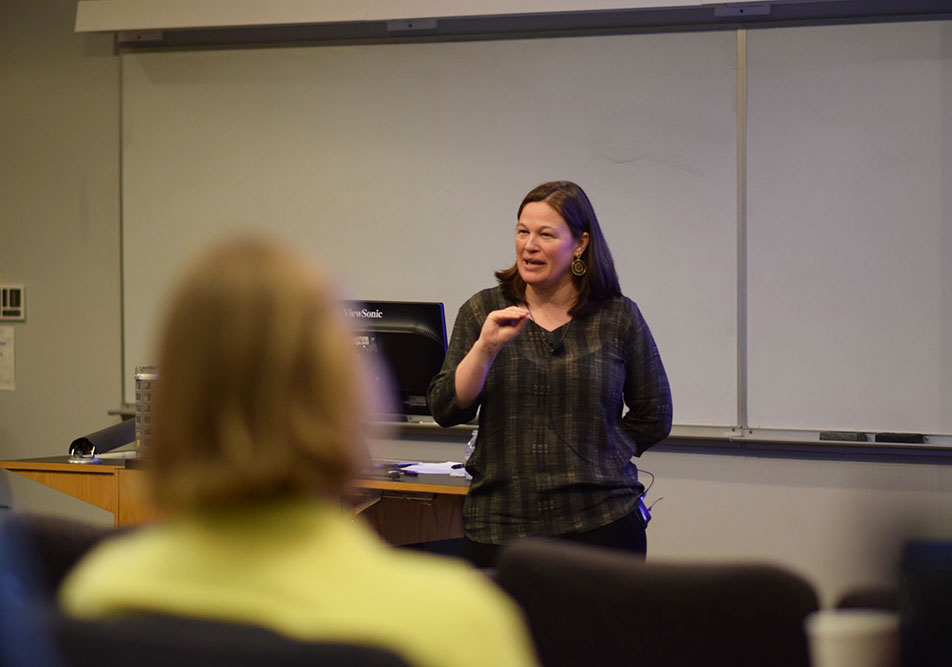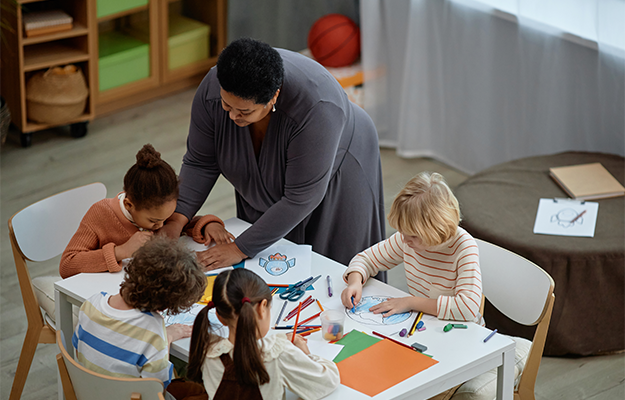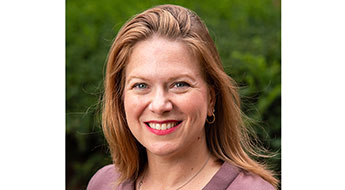Researching Our Longest Lasting Relationships
IPR social demographer Christine Percheski discusses her research into sibling relationships in adulthood
Get all our news
Surprisingly, even though siblings are our longest social relationships, we don’t know that much about sibling relationships in adulthood in the contemporary period.”
Christine Percheski
IPR social demographer

IPR social demographer Christine Percheski shares her research at an IPR colloquium on Nov. 6.
According to the American Psychological Association, eight out of 10 children in the United States grow up with brothers or sisters. For many, this connection will be their longest lasting social relationship. Yet, relatively little research has been conducted about adult siblings in the United States from a sociological perspective and how those relationships ultimately impact people’s lives.
IPR social demographer Christine Percheski discussed her preliminary findings on adult sibling relationships and how she seeks to fill this research gap at an IPR colloquium on Nov. 6.
“Surprisingly, even though siblings are our longest social relationships, we don’t know that much about sibling relationships in adulthood in the contemporary period,” Percheski said.
She outlined several key changes in sibling demographics over the last few decades that have made sibling relationships more important.
For one, declining fertility rates in the U.S. have led to fewer siblings per family. Additionally, higher life expectancy means that fewer siblings are dying in childhood, so most adults have lifelong relationships with their siblings—often longer than with their spouse or their children. Lastly, more divorces, re-marriages, and changes in partners have increased the number of half and stepsiblings.
Percheski says that previous research on siblings has compared outcomes between siblings, such as income or physical health, and coordinating caregiving for parents, but “they don't tell us about sibling dynamics at all.”
She discussed two different lines of research she is conducting around sibling relationships: the changing demographics of siblings and the financial and social support between siblings.
As Percheski looks at how the distribution and composition of siblings is changing for Americans, she wants to understand how these trends are influenced by factors such as race, mother’s education levels, and where individuals live or grow up, as well as how siblings might act as an informal safety net by providing emotional, social, and/or financial support to one another.
Using data from the General Social Survey (GSS), Percheski discovered that the number of siblings can vary widely across a population. Even if overall fertility rates are low, you can still find groups with more or fewer children than the average family. Percheski also finds that in recent U.S. history, the number of families with five or more siblings has declined dramatically, while the number of families with two children has risen, and the number of families with only one child has remained the same.
A key finding, Percheski said, is that number of siblings in U.S. families varies by race and ethnicity and by a mother’s education, with Black families and women with less education having more children.
“This has implications for the availability of support by siblings–emotional support, resource support–and potentially, the burden of obligation to siblings,” Percheski said.
While there is relatively little data on financial support shared between family members outside the home, Percheski used the Survey of Consumer Finances to calculate which groups were most likely to financially support their siblings. Some of her early results show that Black Americans and those with higher education were more likely to give money to a sibling. People with five or more siblings were 64% more likely to support a sibling versus those who only had one sibling.
Over the next few years, Percheski plans to further investigate financial support between siblings, sibling relationships among those with brothers and sisters who are incarcerated or have disabilities, and relationships with cousins in adulthood. She also hopes to launch a national representative survey to collect better data about sibling relationships.
“There are a lot of questions that are just not available elsewhere or have not been asked since the late ‘80s,” Percheski said. “I’d like to replicate some of the questions that have been asked then and add a whole new set of questions, too, about sibling relationships.”
Christine Percheski is associate professor of sociology and an IPR fellow.
Published: December 20, 2023.


